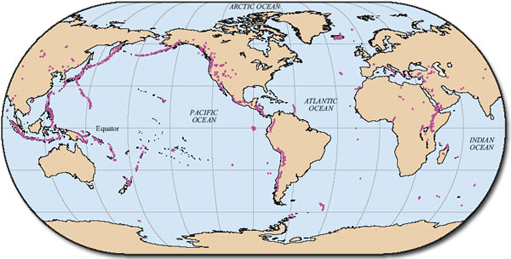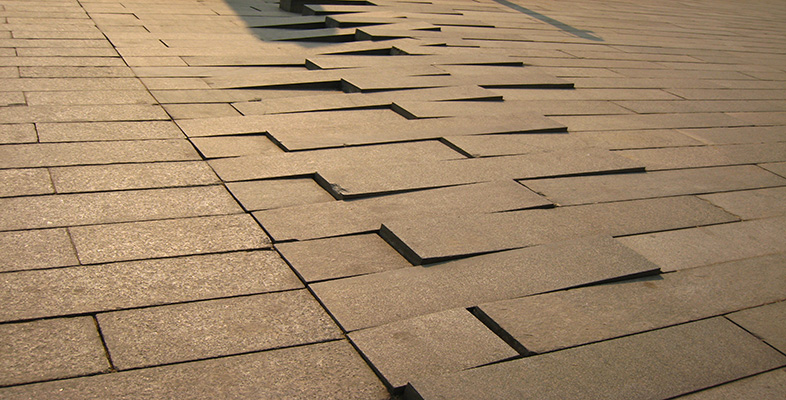3 The theory of plate tectonics
3.1 Assumptions
The surface of the Earth is divided into a number of rigid plates that extend from the surface to the base of the lithosphere. A plate can comprise both oceanic and continental lithosphere. As you already know, continental drift is a consequence of the movement of these plates across the surface of the Earth. Thus the need for the continents to plough through the surrounding oceans is removed, as is the problem of the gap left in the wake of a continent as it drifts - both issues that led to scientific opposition to Wegener's ideas.
The theory of plate tectonics is based on several assumptions, the most important of which are:
-
New plate material is generated at ocean ridges, or constructive plate boundaries, by sea-floor spreading.
-
The Earth's surface area is constant, therefore the generation of new plate material must be balanced by the destruction of plate material elsewhere at destructive plate boundaries. Such boundaries are marked by the presence of deep ocean trenches and volcanic island arcs in the oceans and, when continental lithosphere is involved, mountain chains.
-
Plates are rigid and can transmit stress over long distances without internal deformation - relative motion between plates is accommodated only at plate boundaries.
As a consequence of these three assumptions, and particularly the third assumption, much of the Earth's geological activity, especially seismic and volcanic, is concentrated at plate boundaries (Figure 9). For example, the position of the Earth's constructive, destructive and conservative plate boundaries can be mapped largely on the basis of seismic activity. However, it is not enough just to know where boundaries are. In order to understand the implications that plate tectonics has for Earth evolution and structure, you first need to explore the structure of lithospheric plates, their motion - both relative and real - and the forces that propel the plates across the Earth's surface.
Figure 9 (interactive): (a) Global earthquake epicentres between 1980 and 1996. Only earthquakes of magnitude 4 and above are included. Click on the highlighted areas for more details.
Click on 'View document' below for a bigger version of Figure 9a.
View document [Tip: hold Ctrl and click a link to open it in a new tab. (Hide tip)]

Click on 'View document' below to see a larger version of Figure 9b.
